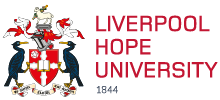Redesign of the University Academic Framework
View the proposal agreed at Senate. (Agreed on 21.01.25)
Introduction
The redesign of our university's academic framework represents a significant shift in our approach to higher education. This plan aims to address the evolving needs of our students, staff, and the broader academic community. By focusing on flexibility, efficiency, and modernisation, we seek to create an environment that better prepares students for the demands of the contemporary workforce while also improving the teaching and research experience for our staff.
The primary objectives of this redesign are 1) to increase curriculum flexibility and efficiency, 2) to facilitate changes in the portfolio 3) to provide students with more opportunities to take up part-time work and experiential learning, 4) to facilitate international student study and 5) to provide staff with opportunities for more consolidated periods of time for research and for leave.
To do this effectively the University is transitioning from the existing three-term based system to a two-semester based system, with smaller, more focused modules, which should offer more choice for students and increased flexibility in delivery patterns.
The proposed redesign of our university's academic framework signifies a pivotal evolution in our educational approach, aiming to meet the dynamic needs of our students, faculty, and the broader academic community. By emphasising flexibility, efficiency, and modernisation, we strive to cultivate an environment that equips students for the contemporary workforce’s demands while enhancing the teaching and research experiences for our staff.
Transitioning to a more flexible and modular academic structure is increasingly acknowledged as essential in higher education. Traditional, rigid curricula often fail to address the diverse requirements of modern students, who need adaptable learning pathways to navigate an unpredictable job market (Advance HE, n.d.). Implementing a semester-based system with smaller, focused modules can offer enhanced curricular flexibility, enabling students to engage in experiential learning and part-time employment, both of which are vital for developing employability skills (Schering and Thompson, 2024). Studies indicate that flexible learning environments incorporating pedagogical and technological advancements foster greater student engagement and motivation (eCampus News, 2021). Moreover, aligning academic calendars with international norms facilitates increased mobility for students and staff, a critical factor in today’s globalised educational landscape (Times Higher Education, 2025).
Adopting smaller modules also promotes an interdisciplinary learning approach, fostering the integration of knowledge across various fields. Research suggests that interdisciplinary education enhances critical thinking, creativity, and problem-solving abilities, equipping students with the adaptability required in an increasingly complex global economy (Repko & Szostak, 2021). By integrating perspectives from multiple disciplines, students develop a holistic understanding of real-world challenges, improving their capacity to address multifaceted problems (Klein, 2017). This approach aligns with global trends in higher education, where interdisciplinary curricula are increasingly recognized for their role in preparing graduates for diverse career pathways (Frodeman, 2017). This method not only broadens students’ perspectives but also aligns with employer demands for graduates proficient in multiple disciplines (Advance HE, n.d.).
Transitioning to this model also addresses student well-being by distributing academic workloads more evenly throughout the year, reducing anxiety associated with end-of-year assessments (Times Higher Education, 2025). Similarly, providing academic staff with dedicated periods for research and leave aligns with the increasing emphasis on academic well-being and productivity (Brookfield, 2017). A semester system with designated assessment periods encourages reflective teaching practices, allowing educators to assess and enhance their instructional methods continually (Brookfield, 2017).
The redesign of our academic framework is a strategic initiative aimed at fostering a more flexible, interdisciplinary, and supportive educational environment. This approach not only prepares students to meet contemporary workforce challenges but also promotes the well-being and professional growth of our academic staff. By integrating flexibility, international alignment, and interdisciplinary learning, our university is positioning itself as a forward-thinking institution that caters to the evolving needs of students, academic staff and the global academic landscape.
References
Advance HE (n.d.) Flexible Learning in Higher Education. Available at: www.advance-he.ac.uk/teaching-and-learning/flexible-learning (Accessed: 18 January 2025)
Brookfield, S. D. (2017) Becoming a Critically Reflective Teacher. Jossey-Bass
eCampus News (2021) 5 Ways a Flexible Academic Structure Increases Equity. Available at: www.ecampusnews.com/teaching-learning/2021/03/16/flexible-academic-structure-increases-equity/ (Accessed: 18 January 2025)
Frodeman, R. (2017) The Oxford Handbook of Interdisciplinarity. 2nd edn. Oxford University Press
Klein, J. T. (2017) Interdisciplining Digital Humanities: Boundary Work in an Emerging Field. University of Michigan Press
Repko, A. F. and Szostak, R. (2021) Interdisciplinary Research: Process and Theory. 4th ed. SAGE Publications
Scheuring, F., & Thompson, J. (2024). Enhancing graduate employability – exploring the influence of experiential simulation learning on life skill development. Studies in Higher Education, 50(2), 256–270
Times Higher Education (2025) What is Interdisciplinarity in Teaching and How Can We Make It Work? Available at: www.timeshighereducation.com/campus/what-interdisciplinarity-teaching-and-how-can-we-make-it-work (Accessed: 18 January 2025)



